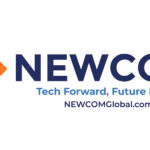Real Time Location Systems (RTLS) continue to evolve in both their applications and the technology that drives the system.
Increasingly, there is a need to track in real time both objects and people within a building or a specific geographic area. Using radio frequency (RF) or wireless technology and an active or passive tagging system, it is now possible to locate people or assets whenever necessary.
Determining what type of RTLS is best for a given situation depends in large part on the value of the asset involved and the purpose behind the tracking. For instance, we look very differently at the value of a pallet of paper towels than we do at a laptop containing highly sensitive information. Thus, we take a different approach to how we track these items.
An active ID tag, which we would apply to the laptop, tells us not only where it is within the tracking area, but also if someone is trying to remove the tag from the laptop in an attempt to steal it. Although the paper towels have monetary value, they are a much less risky asset than the laptop, therefore the pallet can be tracked less expensively using a passive tag.
What should be considered when life safety is involved, as is very often the case in an educational or hospital campus setting? Life safety necessitates the application of an even higher set of standards regarding the assets being followed using active RFID technology.
Following are five best practices for implementing RTLS with life-safety implications within a campus setting:
1.) Ensure you have a dedicated, highly available network. Every second is critical in life-safety situations. When it comes to deploying RTLS to track the whereabouts of a teacher in crisis or a nurse in danger, for instance, a dedicated highly available and reliable network is critical. This type of network will ensure that information is being transmitted reliably at all times, unencumbered by data from non-critical activities. The network is the conduit for information that comes from various departments and devices, including RTLS tags. If all data is running on the same network, a teacher downloading video for a class may also be on the same network that is serving the RTLS.
Overloading the network with data from multiple sources competing for access may cause a collision that results in delayed transmission of critical and time-sensitive data. Any delays in transmission may profoundly affect the outcome of urgent situations, such as when a teacher pushes a panic button and that information is needed to locate her immediately.
2.) Invest in a multi-application platform. While a school or hospital may initially determine that they are interested only in tracking physical assets, the time may come when the focus broadens to include people tracking through the use of RFID-enabled badges or security systems with an RTLS component. For long-range planning, it is advisable to select a system that offers the ability to add applications as needed to save time and cost.
Investing initially in a multi-application platform would allow a facility to build upon the infrastructure already in place. Having multiple vendors with different system setups can potentially cause interference between systems as well as bring about additional costs and overhead. Rather than buying two separate systems that may interfere with each other on the network or require proprietary set ups, the initial investment in a multi-application platform will allow, for example, a hospital to add an infant monitoring program to its existing psychiatric patient tracking.
Similarly, schools have multiple asset-tracking needs – tags for computers, duress buttons, even temperature tracking in cafeteria refrigerators – that may be implemented over time. The multi-application platform approach can help the educational institution avoid investment in multiple individual servers and redundant infrastructure.












